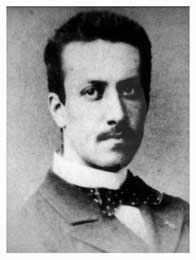
- 7 clarence grove
- horsforth
- leeds, LS18 4LA
- UK
- tel: 0113 258 1300
- order online
- www.editiondb.com
- info@editiondb.com
Widor, Charles-Marie (1844-1937)
Widor was born in Lyon, to a family of organ builders, and initially studied music there with his father, François-Charles Widor, titular organist of Saint-François-de-Sales from 1838 to 1889. The French organ builder Aristide Cavaillé-Coll, reviver of the art of organ building, was a friend of the Widor family; he arranged for the talented young organist to study in Brussels in 1863 with Jacques-Nicolas Lemmens for organ technique and with the elderly François-Joseph Fétis, director of the Brussels Conservatoire, for composition. After this term of study Widor moved to Paris, where he would make his home for the rest of his life. At the age of 24 he was appointed assistant to Camille Saint-Saëns at Église de la Madeleine.
In January 1870, with the combined lobbying of Cavaillé-Coll, Saint-Saëns, and Charles Gounod, the 25-year-old Widor was appointed as "provisional" organist of Saint-Sulpice in Paris, the most prominent position for a French organist. The organ at St-Sulpice was Cavaillé-Coll's masterwork; the instrument's spectacular capabilities proved an inspiration to Widor. Despite his job's ostensibly "provisional" nature, Widor remained as organist at St-Sulpice for nearly 64 years, until the end of 1933. He was succeeded in 1934 by his former student and assistant, Marcel Dupré.
In 1890, upon the death of César Franck, Widor succeeded him as organ professor at the Paris Conservatoire. The class he inherited was initially stunned by this new teacher, who suddenly demanded a formidable technique and a knowledge of J.S. Bach's organ works as prerequisites to effective improvisation. Later (1896), he gave up this post to become composition professor at the same institution. Widor had several students in Paris who were to become famous composers and organists in their own right, most notably the aforementioned Dupré, Louis Vierne, Charles Tournemire, Darius Milhaud, Alexander Schreiner, Edgard Varèse, and the Canadian Henri Gagnon. Albert Schweitzer also studied with Widor, mainly from 1899; master and pupil collaborated on an annotated edition of J. S. Bach's organ works published in 1912-14. Widor, whose own master Lemmens was an important Bach exponent, encouraged Schweitzer's theological exploration of Bach's music.
Well known as a man of great culture and learning, Widor was made a chevalier of the Légion d'Honneur in 1892, named to the Institut de France in 1910, and was elected "Secrétaire perpetuel" (permanent secretary) of the Académie des Beaux-Arts on 18 July 1914.
In 1921, Widor founded the American Conservatory at Fontainebleau with Francis-Louis Casadesus. He was the Director until 1934, when he was succeeded by Maurice Ravel. His close friend, Isidor Philipp gave piano lessons there, and Nadia Boulanger taught an entire generation of new composers.
At the age of 76, Widor married Mathilde de Montesquiou-Fézensac on 26 April 1920 at Charchigné. The 36-year-old Mathilde was a member of one of the oldest and most prominent families of Europe. She died in 1960: there were no children from this union.
On 31 December 1933, Widor resigned his position at Saint-Sulpice. Three years later he suffered a stroke which paralysed the right side of his body, although he remained mentally alert to the last. He died at his home in Paris on 12 March 1937 at the age of 93, and his remains were interred in the crypt of Saint-Sulpice four days later.
Widor wrote music for a wide variety of instruments and ensembles but only his works for organ are played with any regularity today. These include: ten Organ Symphonies, three Symphonies for orchestra with organ, Suite Latine, Trois Nouvelles Pièces, and six arrangements of works by Bach under the title Bach's Memento (1925). The organ symphonies are his most significant contribution to the organ repertoire.
Widor's best-known single piece for the organ is the final movement, Toccata, from his Symphony for Organ No.5, which is often played as a recessional at wedding ceremonies and at the close of the Christmas Midnight Mass at Saint Peter's Basilica (The Vatican City, Rome). The Toccata from Symphony No. 5 is the first of the toccatas characteristic of French Romantic organ music, and served as a model for later works by Boëllmann, Mulet, and Dupré. Widor was pleased with the worldwide renown this single piece afforded him, but he was unhappy with how fast many other organists played it. Widor himself always played the Toccata rather deliberately. Many organists play it at a very fast tempo whereas Widor preferred a more controlled articulation to be involved. He recorded the piece, at St. Sulpice in his eighty-ninth year: the tempo used for the Toccata is quite slow.
